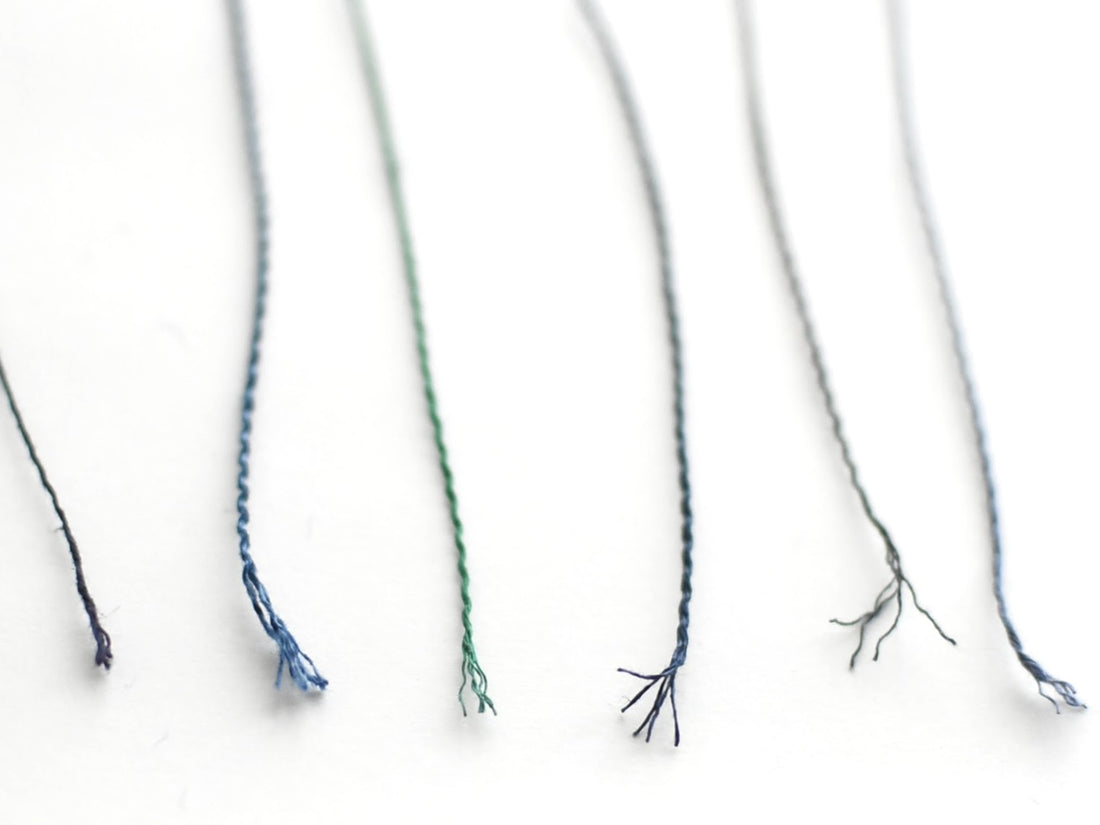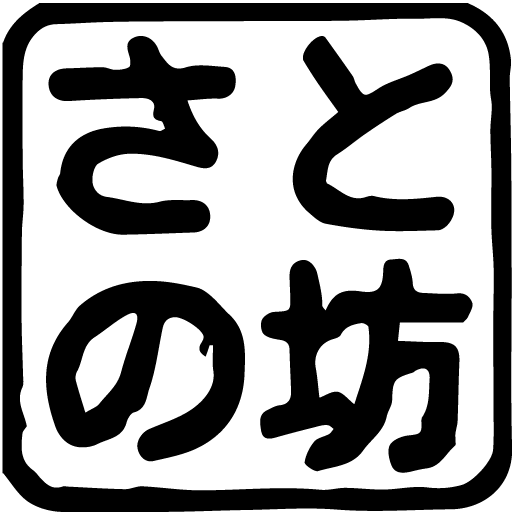
◆Learn about cloth and thread 4 (woven thread)
◆Learn about cloth and thread 4 (woven thread)
In the previous article, Understanding Cloth and Thread 3 , we compared the weight of cloth. The weight of cloth is affected by the threads that make up the cloth and the glue contained in the warp threads. It seems like there are other secrets that manufacturers use to improve the texture and strength of their fabrics, but I'll leave those secrets alone and take a closer look at the weaving threads.
What part of the weaving thread affects the weight of the cloth? Also, are there any clues other than weight?

(What do the threads that make up the cloth look like?)
According to the book ``Mechanism Illustrated Series: Best understanding of fiber types and processing,'' which I introduced in Understanding Cloth and Thread 2 , for ordinary fabrics , the warp threads are pasted before weaving. The first reason is that strong tension is applied during weaving, the second is to withstand friction with the parts of the loom (reed, heddle), prevent thread breakage, and prevent fuzzing, and the third is to prevent weaving. It seems like there is a way to improve efficiency. If you tighten it that much, the fabric won't stretch vertically.* Reed: An accessory for a loom. A frame made of thin pieces of bamboo or metal arranged like the teeth of a comb. It is used to arrange the warp threads and drive the weft threads.
* Heddle: A device used on a loom to separate the warp threads into upper and lower parts for threading the weft threads.
◆Look at the warp threads of the fabric

(Do you know which thread each cloth is made of?)
What should you do to the cloth when you start Koginzashi? For me, it's all about fraying . The reason is that the cloth becomes just a thread . It feels good to feel the threads fraying (lol), but I get nervous when the fabric gets smaller and smaller.
If you do Koginzashi today and the edge of the fabric frays, why not look at the thread instead of throwing it away? The photo above shows the warp threads of each fabric lined up . Some of the pieces are a little curly because they have been coated with anti-fray liquid, but do you know which fabric the threads are from?
(Tick Tock Tick Tock)
Below is the answer. Even though it's just a thread, it's interesting to see traces of when it was a textile in the roughness of the thread. Maybe even this bumpy texture contains a hint to understand the characteristics of the cloth! I'm excited, but I'll put it aside for now.

◆Try loosening the warp threads
Please compare the lightest Olympus and the heaviest Kensen in the previous blog . There may be a difference in direction, but it's interesting that the thickness is clearly different. As it is, I can only tell the thickness of the thread, so I loosened the tip a little and observed it.

In the photo above, the 6 yarns on the left are linen, but the second from the left is a rayon blend, and the 6 yarns on the right are cotton. Just by looking at this, you can probably notice some differences in the characteristics of linen and cotton fabrics! Let's take a closer look.

(The tip of the linen cloth is loosened)
What did you notice? The threads of linen cloth seem to be divided into two to three threads. Fancy Hesshan is a rayon blend, so it looks like a completely different fiber!

(The tip of the cotton cloth is loosened)
How about this? When you take a quick look at it, you will immediately notice that the number of threads in the weaving thread is higher than that of linen! It seems to be divided into roughly 4 to 6 parts.
By the way, Kensen's Congress, which was the heaviest thread in the previous blog, appears to be made by twisting three thin threads into one thread, then twisting them together into three threads to create a single woven thread. . Well, it's heavy! That's right, it's thick! That's right, it's sturdy! I couldn't have been more convinced. I think it would be more fun to learn about yarn as well.
◆ Differences in strength between linen and cotton fabrics Linen and cotton fabrics are the result of technology, so they won't break even if you gently touch them. Considering the characteristics of the thread, there is a smell that seems to affect the slippage of the thread as it passes through the fabric (friction), the ease with which the thread is threaded (fluctuation of the thread, etc.), and the degree of wear of the thread. Shin.
Today, we reaffirmed that cloth is a textile, and we also confirmed that textiles are a collection of threads, and focused our research on the threads before they become cloth. I would like to gradually get closer to the difference in appearance, what kind of experience it will be when actually stabbing, and the difference in the feeling of stabbing. If something interests me, I will go off on a side track, so I think it will be a slow study, but I would be happy if you could take your time with me.

(Finally, I tried stitching on each piece of cloth)
◆A short story about my recent productions Regarding the productions that I introduce on Instagram , I realize a lot of things every day, and I keep my brain running at full speed and have a lot of fun working on them. I think that a modoko (basic pattern) design is necessary for Kogin-zashi, but I don't think that a design is absolutely necessary to make Kogin-zashi on a large piece of cloth. I think a pattern is necessary for " accurate and orderly kogin ( Kogin zashi that proceeds from the answer )," but kogin zashi has a limit on the direction in which it moves (number of stitches, etc.) As you select the number of stitches from the options, they will expand one after another. ←I have personally experienced this process of not knowing what I am stabbing ( Kogin-zashi moving toward an answer ), and I am doing Kogin-zashi thinking that I want to convey Kogin-zashi in a simpler way.
I'm also enjoying Koginzashi by making kits and sharing the designs with everyone, so I don't have a negative view of the designs. However, I would like to remove the barrier that `` Kogin-zashi is difficult '' as much as possible. Why not enjoy Koginzashi like a child making something with blocks? That's how I feel.
If you step away from designs and calculations for a little bit, Koginzashi is so simple and fun! I wish I could understand this more deeply myself. Thank you for your continued support.
◆Regarding the research content This blog is information for individuals who enjoy Koginzashi, and is based on research conducted by Satonobo using materials he kept at home. Please note that there may be differences from the fabric you have depending on the storage environment. Also, unauthorized use of photos is prohibited. I hope you have a fun Kogin time.
◆References
“Mechanism Illustrated Series: Best understanding of fiber types and processing” Paper version released on June 20, 2012, edited by Japan Textile Engineers Center, ISBN 978-4-7741-5137-3, Gihyo Direct
◆Quote
Kotobank , Digital Daijisen “ Koto”, https://kotobank.jp/wordKoto-40175 , ( June 12 , 2023 )
Kotobank , Digital Daijisen “Soken ”, https://kotobank.jp/word/Soken-89282 , ( June 12 , 2023 )
Satonobou
